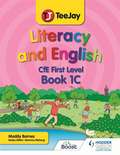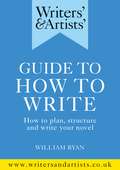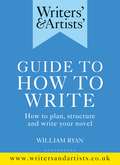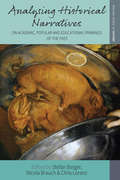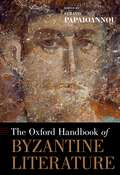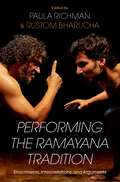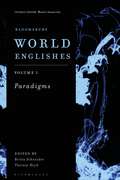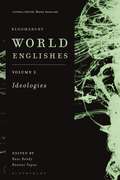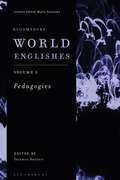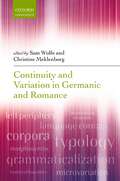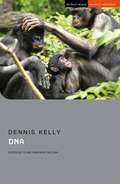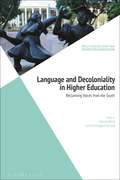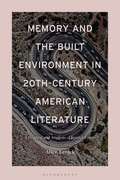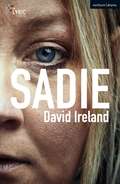- Table View
- List View
TeeJay Literacy and English CfE First Level Book 1C
by Madeleine BarnesAdd fun to your lessons with the only Literacy and English textbooks offering comprehensive, consistent coverage of the whole CfE First Level curriculum. This brand-new series from TeeJay will enable you to confidently cover all CfE Benchmarks and Experiences and Outcomes for Writing, Listening & Talking, and Reading for Understanding.- Explore different genres and foster a love of reading with exciting text extracts- Bring the fun of learning to your classroom with activities for play-based learning- Help students of all abilities progress at their own pace with tasks for differentiation flagged throughout- Continuously build and consolidate knowledge and monitor progression with end-of-chapter 'Review Revisit, Revise' exercises- Brush up on past teaching with the exercises in Chapter 0, which revise key skills from Book 1B- Trust the core TeeJay philosophy - progression and consolidation - to help students build and develop their skills and understandingThis title will also be available as a Boost eBook - contact TeeJay consultant Karen Kidd for more information: Karen.Kidd@hoddergibson.co.uk
The Artful Dickens: The Tricks and Ploys of the Great Novelist
by John Mullan'One for your Christmas list … A feast of Dickensian knowledge' The Times 'This is a marvellous, endlessly illuminating book ... It doesn't go on the shelf alongside other critics; it goes on the shelf alongside Dickens' Howard JacobsonDiscover the tricks of a literary master in this essential guide to the fictional world of Charles Dickens. From Pickwick to Scrooge, Copperfield to Twist, how did Dickens find the perfect names for his characters?What was Dickens's favourite way of killing his characters?When is a Dickens character most likely to see a ghost?Why is Dickens's trickery only fully realised when his novels are read aloud? In thirteen entertaining and wonderfully insightful essays, John Mullan explores the literary machinations of Dickens's eccentric genius, from his delight in clichés to his rendering of smells and his outrageous use of coincidences. A treat for all lovers of Dickens, this essential companion puts his audacity, originality and brilliance on full display.
Literature in a Time of Migration: British Fiction and the Movement of People, 1815–1876
by Josephine McDonaghLiterature in a Time of Migration offers a profound rethinking of British fiction in light of the new practices of human mobility that reshaped the nineteenth-century world. Building on the growing critical engagement with globalization in literary studies, it confronts the paradox that at a time when transnational human movement occurred globally on an unprecedented scale, British fiction appeared to turn inward to tell stories of local places that valorized stability and rootedness. In contrast, this book reveals how literary works, from the end of the Napoleonic Wars to the advent of the New Imperialism, were active components of a culture of colonization and emigration. Fictional texts, as print commodities, were enmeshed in technologies of transport and communication, and innovations in literary form were spurred by the conditions and consequences of human movement. Examining works by Scott, Charlotte Brontë, Dickens, and George Eliot, as well as popular contemporaries, Mary Russell Mitford, John Galt, and Thomas Martin Wheeler, this volume demonstrates how literary texts overlap with an agenda set in public discussions of colonial emigration that they also helped to shape. Debates about assisted emigration, 'forced' and 'free' migration, colonization, settlement, and the removal of native peoples, figure in fictions in complex ways. Read alongside writings by emigration theorists, practitioners, and enthusiasts for colonization, fictional texts reveal a powerful and sustained engagement with British migratory practices and their worldwide consequences. Literature in a Time of Migration is a timely reminder of the place and importance of migration within British cultural heritage.
Writers' & Artists' Guide to How to Write: How to plan, structure and write your novel (Writers' and Artists')
by William RyanHow to Write is all about writing for publication, it concentrates on advice on how to construct, craft and draft novels across all genres, but the examples and details on what to consider when writing for any audience means it is relevant to writing in all its forms, including books for children and non-fiction.The advice and techniques suggested in this book have been tested in practice by author William Ryan, successful novelist, and creative writing tutor at City University and Guardian Masterclasses and are an extension of the 'Your Novel' writing course he has delivered with W&A over several years.
Writers' & Artists' Guide to How to Write: How to plan, structure and write your novel (Writers' and Artists')
by William RyanLearn the craft of effective storytelling with the Writers' & Artists' Guide to How to Write. Novelist William Ryan introduces the techniques needed to construct, craft and draft a novel. He provides tried-and-tested examples and details on what to consider when writing for any audience, across any genre. Each chapter tackles a key aspect of the writing process, including how to: structure a novel, develop central and subsidiary characters, create atmosphere and tension, write punchy dialogue and pacey scenes. This is the perfect guide for any writer looking for clear and informed advice on getting their ideas on to the page from the bestselling and trusted creative writing brand.
Analysing Historical Narratives: On Academic, Popular and Educational Framings of the Past (Making Sense of History #40)
by Stefan Berger, Nicola Brauch Chris LorenzFor all of the recent debates over the methods and theoretical underpinnings of the historical profession, scholars and laypeople alike still frequently think of history in terms of storytelling. Accordingly, historians and theorists have devoted much attention to how historical narratives work, illuminating the ways they can bind together events, shape an argument and lend support to ideology. From ancient Greece to modern-day bestsellers, the studies gathered here offer a wide-ranging analysis of the textual strategies used by historians. They show how in spite of the pursuit of truth and objectivity, the ways in which historians tell their stories are inevitably conditioned by their discursive contexts.
The Oxford Handbook of Byzantine Literature (Oxford Handbooks)
by Stratis PapaioannouThis volume, the first ever of its kind in English, introduces and surveys Greek literature in Byzantium (330 - 1453 CE). In twenty-five chapters composed by leading specialists, The Oxford Handbook of Byzantine Literature surveys the immense body of Greek literature produced from the fourth to the fifteenth century CE and advances a nuanced understanding of what "literature" was in Byzantium. This volume is structured in four sections. The first, "Materials, Norms, Codes," presents basic structures for understanding the history of Byzantine literature like language, manuscript book culture, theories of literature, and systems of textual memory. The second, "Forms," deals with the how Byzantine literature works: oral discourse and "text"; storytelling; rhetoric; re-writing; verse; and song. The third section ("Agents") focuses on the creators of Byzantine literature, both its producers and its recipients. The final section, entitled "Translation, Transmission, Edition," surveys the three main ways by which we access Byzantine Greek literature today: translations into other Byzantine languages during Late Antiquity and the Middle Ages; Byzantine and post-Byzantine manuscripts; and modern printed editions. The volume concludes with an essay that offers a view of the recent past--as well as the likely future--of Byzantine literary studies.
Performing the Ramayana Tradition: Enactments, Interpretations, and Arguments
The Ramayana, one of the two pre-eminent Hindu epics, has played a foundational role in many aspects of India's arts and social norms. For centuries, people learned this narrative by watching, listening, and participating in enactments of it. Although the Ramayana's first extant telling in Sanskrit dates back to ancient times, the story has continued to be retold and rethought through the centuries in many of India's regional languages, such as Hindi, Tamil, and Bengali. The narrative has provided the basis for enactments of its episodes in recitation, musical renditions, dance, and avant-garde performances. This volume introduces non-specialists to the Ramayana's major themes and complexities, as well as to the highly nuanced terms in Indian languages used to represent theater and performance. Two introductions orient readers to the history of Ramayana texts by Tulsidas, Valmiki, Kamban, Sankaradeva, and others, as well as to the dramaturgy and aesthetics of their enactments. The contributed essays provide context-specific analyses of diverse Ramayana performance traditions and the narratives from which they draw. The essays are clustered around the shared themes of the politics of caste and gender; the representation of the anti-hero; contemporary re-interpretations of traditional narratives; and the presence of Ramayana discourse in daily life.
Bloomsbury World Englishes Volume 1: Paradigms
Bloomsbury World Englishes offers a comprehensive and rigorous description of the facts, implications and contentious issues regarding the forms and functions of English in the world. International experts cover a diverse range of varieties and topics, offering a more accurate understanding of English across the globe and the various social contexts in which it plays a significant role. With volumes dedicated to research paradigms, language ideologies and pedagogies, the collection pushes the boundaries of the field to go beyond traditional descriptive paradigms and contribute to moving research agendas forward. Volume 1: Paradigms analyzes the ways in which we make sense of English as a global language, its many varieties and how these come into contact and interact with other languages. It moves the field beyond existing 'models' that are no longer sufficient to describe English(es) in the era of globalization.
Bloomsbury World Englishes Volume 2: Ideologies
Bloomsbury World Englishes offers a comprehensive and rigorous description of the facts, implications and contentious issues regarding the forms and functions of English in the world. International experts cover a diverse range of varieties and topics, offering a more accurate understanding of English across the globe and the various social contexts in which it plays a significant role. With volumes dedicated to research paradigms, language ideologies and pedagogies, the collection pushes the boundaries of the field to go beyond traditional descriptive paradigms and contribute to moving research agendas forward.Volume 2: Ideologies explores the politics and economics of English, and the impact of language on local societies and cultures. In doing so, chapters discuss how English is often entangled in societal issues, such as inequality, (de-)colonization, racism, oppression and liberation.
Bloomsbury World Englishes Volume 3: Pedagogies
Bloomsbury World Englishes offers a comprehensive and rigorous description of the facts, implications and contentious issues regarding the forms and functions of English in the world. International experts cover a diverse range of varieties and topics, offering a more accurate understanding of English across the globe and the various social contexts in which it plays a significant role. With volumes dedicated to research paradigms, language ideologies and pedagogies, the collection pushes the boundaries of the field to go beyond traditional descriptive paradigms and contribute to moving research agendas forward. Volume 3: Pedagogies addresses the teaching of English as a world language. Chapters in this volume consider the teaching and learning of English(es) from a range of perspectives and on the basis of experiences and research from many parts of the world.
Continuity and Variation in Germanic and Romance
This volume offers a range of synchronic and diachronic case studies in comparative Germanic and Romance morphosyntax. These two language families, spoken by over a billion people today, have played a central role in linguistic research, but many significant questions remain about the relationship between them. Following an introduction that sets out the methodological, empirical, and theoretical background to the book, the volume is divided into three parts that deal with the morphosyntax of subjects and the inflectional layer; inversion, discourse pragmatics, and the left periphery; and continuity and variation beyond the clause. The contributors adopt a diverse range of approaches, making use of the latest digitized corpora and presenting a mixture of well-known and under-studied data from standard and non-standard Germanic and Romance languages. Many of the chapters challenge received wisdom about the relationship between these two important language families. The volume will be an indispensable resource for researchers and students in the fields of Germanic and Romance linguistics, historical and comparative linguistics, and morphosyntax.
DNA (Student Editions)
by Dennis KellyDennis Kelly's play DNA centres on friendship, morality and responsibility in odd circumstances. When a group of young friends are faced with a terrible accident, they deliberately make the wrong choices to cover it up and find themselves in an unusually binding friendship where no one will own up to what they've done.The play began life as a National Theatre Connections commission in 2008 and has subsequently been produced, studied and toured around the world. DNA is published for the first time in the Methuen Drama Student Edition series with commentary and notes by Clare Finburgh Delijani, which look at the play's context, themes, dramatic form, staging possibilities and production history, plus offers suggestions for further reading.
Esperanto and Languages of Internationalism in Revolutionary Russia
by Brigid O'KeeffeHoping to unite all of humankind and revolutionize the world, Ludwik Zamenhof launched a new international language called Esperanto from late imperial Russia in 1887. Ordinary men and women in Russia and all over the world soon transformed Esperanto into a global movement. Esperanto and Languages of Internationalism in Revolutionary Russia traces the history and legacy of this effort: from Esperanto's roots in the social turmoil of the pre-revolutionary Pale of Settlement; to its links to socialist internationalism and Comintern bids for world revolution; and, finally, to the demise of the Soviet Esperanto movement in the increasingly xenophobic Stalinist 1930s. In doing so, this book reveals how Esperanto – and global language politics more broadly – shaped revolutionary and early Soviet Russia. Based on extensive archival materials, Brigid O'Keeffe's book provides the first in-depth exploration of Esperanto at grassroots level and sheds new light on a hitherto overlooked area of Russian history. As such, Esperanto and Languages of Internationalism in Revolutionary Russia will be of immense value to both historians of modern Russia and scholars of internationalism, transnational networks, and sociolinguistics.
Gender, Performance, and Authorship at the Abbey Theatre
by Elizabeth Brewer RedwineGender, Performance, and Authorship at the Abbey Theatre argues for a reconsideration of authorship at the Abbey Theatre. The actresses who performed the key roles at the Abbey contributed original ideas, language, stage directions, and revisions to the theatre's most renowned performances and texts, and this study asks that we consider the role of actresses in the development of these plays. Plays that have been historically attributed to W. B. Yeats and J. M. Synge have complicated histories, and the neglect of these women's contributions over the past century reflects power dynamics that privilege male, Anglo Irish writers over the contributions of working class actresses. The study asks that readers consider the importance of past performance in the creation of written text. Yeats began his earliest plays performing with and writing for Laura Armstrong, a young woman who was a precursor to Maud Gonne in her irreverent challenge to traditional gender roles. After writing his first plays and poems for Armstrong, Yeats met Gonne and developed two Cathleen plays, The Countess Cathleen and Cathleen ni Houlihan, for her to perform, beginning a lifetime of fruitful argument between the two writers about how Ireland should appear onstage. The book then turns to Synge's work with Molly Allgood in creating The Playboy of the Western World and Molly's contributions to Synge's Deirdre of the Sorrows. A section on Yeats's Deirdre shows the contributions of Lady Gregory and the play's performers. The book ends with a reconsideration of Abbey actress Sara Allgood's performances in British and American film as she brought her earliest work in the pre-Abbey tableau movement to American audiences in the 1940s, in ways that challenged ideas of Irishness, American identity, and aging women on screen.
Language and Decoloniality in Higher Education: Reclaiming Voices from the South (Multilingualisms and Diversities in Education)
by Zannie Bock Christopher StroudLanguage and Decoloniality in Higher Education brings together a collection of diverse papers that address, from various angles, the issue of decoloniality, language and transformation in higher education. It reflects the authors' cumulative years of experience as educators in higher education in different southern contexts. Distilled as case studies, the authors use a range of decolonial lenses to reflect on questions of knowledge, language and learning, and to build a reflexive praxis of decoloniality through multilingualism. Besides a number of decolonial persepectives which readers will be familiar with, this volume also explores a conceptual framework, Linguistic Citizenship, developed over the past two decades by scholars in southern Africa. In this collection, Linguistic Citizenship is used as a lens to 'think beyond' the inherited colonial matrices of language which have shaped this region (and many other southern contexts) for centuries, and to 're-imagine' multilingualism – and semiotics, more broadly – as a transformative resource in the broader project of social justice. Although each chapter has firm roots in the South African context, these studies have much to offer others in their 'quest for better worlds'. Of particular interest to global scholars are the authors' recounts of how they have grappled with leveraging the country's multilingual resources in the project of promoting academic access and success in the face of historical hierarchies of language and social power.
Memory and the Built Environment in 20th-Century American Literature: A Reading and Analysis of Spatial Forms
by Alice LevickFrom the paving of the Los Angeles River in 1938 and the creation of the G.I. Bill in 1944, to the construction of the Interstate Highway System during the late 1950s and the brownstoning movement of the 1970s, throughout the mid-20th-century the United States saw a wave of changes that had an enduring impact on the development of urban spaces. Focusing on the relationship between processes of demolition and restoration as they have shaped the modern built environment, and the processes by which memory is constructed, hidden, or remade in the literary text, this book explores the ways in which history becomes entangled with the urban space in which it plays out. Alice Levick takes stock of this history, both in the form of its externalised, concretised manifestation and its more symbolic representation, as depicted in the mid-20th-century work of a selection of American writers. Calling upon access to archival material and interviews with New York academics, authors, local historians and urban planners, this book locates Freud's 'Uncanny' in the cracks between the absent and present, invisible and visible, memory and history as they are presented in city narratives, demonstrating both the passage of time and the imposition of 20th-century modernism. With reference to the works of D. J. Waldie, Joan Didion, Hisaye Yamamoto, Raymond Chandler, Marshall Berman, Gil Cuadros, Paule Marshall, L. J. Davis, and Paula Fox, Memory and the Built Environment in 20th-Century American Literature unpacks how time becomes visible in Los Angeles, Sacramento, Lakewood, and New York in the decades just before and after the Second World War, questioning how these spaces provide access to the past, in both narrative and spatial forms, and how, at times, this access is blocked.
Performing Gods in Classical Antiquity and the Age of Shakespeare (Bloomsbury Studies in Classical Reception)
by Dustin W. Dixon John S. GarrisonThe gods have much to tell us about performance. When human actors portray deities onstage, such divine epiphanies reveal not only the complexities of mortals playing gods but also the nature of theatrical spectacle itself. The very impossibility of rendering the gods in all their divine splendor in a truly convincing way lies at the intersection of divine power and the power of the theater. This book pursues these dynamics on the stages of ancient Athens and Rome as well on those of Renaissance England to shed new light on theatrical performance. The authors reveal how gods appear onstage both to astound and to dramatize the very machinations by which theatrical performance operates. Offering an array of case studies featuring both canonical and lesser-studied texts, this volume discusses work of Aeschylus, Sophocles, Euripides, Aristophanes, and Plautus as well as Beaumont, Heywood, Jonson, Marlowe, and Shakespeare.This book uniquely brings together the joint perspectives of two experts on classical and Renaissance drama. This volume will appeal to students and enthusiasts of literature, classics, theater, and performance studies.
Referring to the World: An Opinionated Introduction to the Theory of Reference
by Kenneth A. TaylorOur words and ideas refer to objects and properties in the external world; this phenomenon is central to thought, language, communication, and science. But great works of fiction are full of names that don't seem to refer to anything! In this book Kenneth A. Taylor explores the myriad of problems that surround the phenomenon of reference. How can words in language and perturbations in our brains come to stand for external objects? Reference is essential to truth, but which is more basic: reference or truth? How can fictional characters play such an important role in imagination and literature, and how does this use of language connect with more mundane uses? Taylor develops a framework for understanding reference, and the theories that other thinkers-past and present-have developed about it. But Taylor doesn't simply tell us what others thought; the book is full of new ideas and analyses, making for a vital final contribution from a seminal philosopher.
Researching Communications: A Practical Guide to Methods in Media and Cultural Analysis
by David Deacon Michael Pickering Graham Murdock Peter GoldingThe new edition of the highly respected Researching Communications is a comprehensive and authoritative guide to researching media and communication. Researching Communications, Third Edition is an invaluable guide to performing and analysing research tasks, introducing the major research methods, giving detailed examples of research analysis and practical step-by-step guidance in clear language. Written by highly regarded experts in the field, the third edition includes new sections on social media analysis, digital research methods and comparative research, as well as updated case studies, international examples and details of recent developments in media and communication studies.Undergraduate and postgraduate media and communication students will find Researching Communications an invaluable resource at all stages of their course.
Sadie (Modern Plays)
by David IrelandSadie has a one-night stand with the new office temp, Joao, but it develops into something much more serious when Joao reveals he's in love with her. Sadie is flattered but she has a long history of terrible relationships. She wonders if it's even possible for her to be happy in love? To answer that question, she calls upon her long dead uncle Red and her abusive ex-husband Clark, as well as her new therapist Mairead. Together they help her face some horrifying truths she's kept hidden for too long. Lyric Theatre Belfast, in association with Stephen Rea's Field Day Theatre Company, bring this powerful new play to the stage, to be broadcast on BBC Four as part of BBC Arts 'Lights up' for the new Culture in Quarantine Season – a celebration of British theatre, bringing newly-recorded staged productions from UK theatres to audiences across television, radio, iPlayer and BBC Sounds.Directed by Conleth Hill (Lord Varys, Game of Thrones) it stars award-winning actress Abigail McGibbon.
Burning Man: The Ascent of DH Lawrence
by Frances Wilson'Frances Wilson writes books that blow your hair back. She makes Lawrence live and breathe, annoy and captivate you … she conjures the past with such clarity and wit and flair that it feels utterly present' Katherine Rundell 'A brilliantly unconventional biography, passionately researched and written with a wild, playful energy' Richard HolmesD H Lawrence is no longer censored, but he is still on trial – and we are still unsure what the verdict should be, or even how to describe him. History has remembered him, and not always flatteringly, as a nostalgic modernist, a sexually liberator, a misogynist, a critic of genius, and a sceptic who told us not to look in his novels for 'the old stable ego', yet pioneered the genre we now celebrate as auto-fiction. But where is the real Lawrence in all of this, and how – one hundred years after the publication of Women in Love - can we hear his voice above the noise? Delving into the memoirs of those who both loved and hated him most, Burning Man follows Lawrence from the peninsular underworld of Cornwall in 1915 to post-war Italy to the mountains of New Mexico, and traces the author's footsteps through the pages of his lesser known work. Wilson's triptych of biographical tales present a complex, courageous and often comic fugitive, careering around a world in the grip of apocalypse, in search of utopia; and, in bringing the true Lawrence into sharp focus, shows how he speaks to us now more than ever.'No biography of Lawrence that I have read comes close to Burning Man' Ferdinand Mount, author of Kiss Myself Goodbye'The most original voice in life-writing today' Lucasta Miller, author of Keats
Clothing and Queer Style in Early Modern English Drama
by James M. BromleyThis book examines early modern drama's depiction of non-standard forms of masculinity grounded in superficiality, inauthenticity, affectation, and the display of the extravagantly clothed body. Practices of extravagant dress destabilized distinctions between able-bodied and disabled, human and non-human, and the past and present, distinctions that structure normative ways of thinking about sexuality. In city comedies by Ben Jonson, George Chapman, Thomas Middleton, and Thomas Dekker, extravagantly dressed male characters imagine alternatives to the prevailing modes of subjectivity, sociability, and eroticism in early modern London. While these characters are situated in hostile narrative and historical contexts, this book draws on recent work on disability, materiality, and queer temporality to rethink their relationship to those contexts in order to access the world-making possibilities of early modern queer style. In their rich representations of life in London around the turn of the seventeenth century, these plays not only were, but also remain, uniquely sensitive to the intersection of sexuality, urbanization, and material culture. The attachments and pleasures of early modern sartorial extravagance they depict can estrange us from the epistemologies that narrow current thinking about sexuality's relationship to authenticity, pedagogy, interiority, and privacy.
Passion's Fictions from Shakespeare to Richardson: Literature and the Sciences of Soul and Mind
by Benedict S. RobinsonPassion's Fictions traces the intimate links between literature and the sciences of mind and soul from the age of Shakespeare to the rise of the novel. It chronicles the emergence of new sciences of the passions between the sixteenth and eighteenth centuries, and it argues that this history was shaped by rhetoric that contained the most extensively particularized discourse on the passions, offering principles for moving and affecting the passions of others in concrete social scenes. This rhetoric of the passions centered on narrative as the instrument of a non-theoretical knowledge of the passions in their particularity, predicated on an account of passion as an intimate relation between an impassioned mind and an impassioning world: rhetoric offers a kind of externalist psychology, formalized in the relation of passion to action and underwriting an account of narrative as a means of both moving passion and knowing it. This volume describes the psychology of the passions before the discipline of psychology, tracing the influence of rhetoric on theories of the passions from Francis Bacon to Adam Smith and using that history to read literary works by Shakespeare, Milton, Haywood, Richardson, and others. Narrative offers a means of knowing and moving the passions by tracing them to the events and objects that generate them; the history of narrative practices is thus a key part of the history of the psychology of the passions at a critical moment in its development.
Bad Girls in School (Caribbean Modern Classics)
by Gwyneth HaroldThere have been many great and enduring works of literature by Caribbean authors over the last century. The Caribbean Contemporary Classics collection celebrates these deep and vibrant stories, overflowing with life and acute observations about society.Three girls are on the brink of expulsion from the respected Redeemer College: 'Failure to complete term assignments, ... using foul language ... stealing another student's cell phone ... persistent lateness for English classes. Breaching the behaviour code ...' Katreena, Ta Jeeka and Caledonia are about to be written off. This insightful book unsentimentally exposes the fault lines through society, and the deep effects they have on individuals. It describes the choices people make and the decisions they feel forced in to. Maturing into young adulthood, these girls each have to make, or lose, their way, in their own way. What difference can one teacher make?
